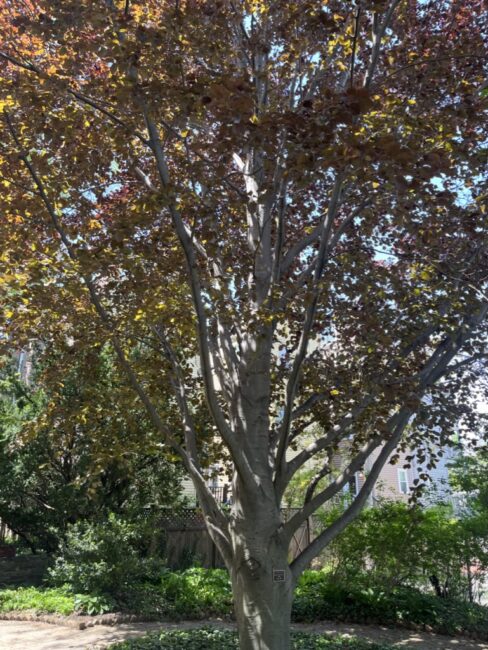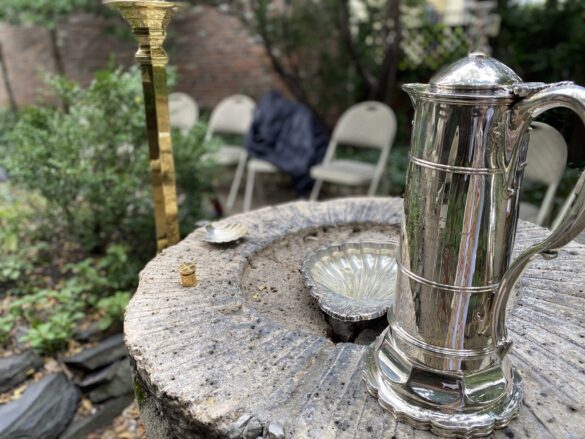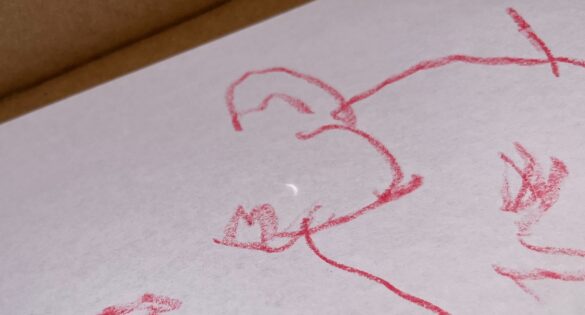Many of you know that we’re in the midst of a process to renovate and improve the Garden, especially focusing on making the Garden a more accessible community space: widening and restoring some of the paths so they are accessible, broadening some of the paved areas in which we gather for food and conversation, adding lighting along the pathways, and gently grading the lower section of the Garden so that it forms an accessible ramp up to the upper section, rather than the sunken step (and giant puddle!) currently between the two sections. This work is being funded by a $150,000 Community Preservation Act grant.
This month, our Vestry approved a bid from one of three contractors who submitted proposals. The total cost will be well within the estimate, allowing the full cost of the project to be covered by the CPA grant. (The grant only covers accessibility and lighting, not any additional planting.) The exact timeline of the construction process has not been determined yet, but work should begin this summer.
So this week, I thought it would be fun to share a few reflections, memories, and especially photographs from the Garden’s past, as we prepare for the Garden’s future.
Around this time every year, the Wolcott Cutler Memorial Garden behind St. John’s is transformed into a sanctuary of its own. During the winter and early spring, the Garden is bare and brown, like everything, and often cut off from the world by puddles or snow. But during the spring and in the summer, it becomes an urban oasis. I often sit in the Garden to read or to write a sermon during the warmer months, and sometimes find myself absorbed by the world around me instead. The breeze rustles the leaves high above me, the shade and the cool walls of the church dispel the summer heat, the birds sign hymns all around, and—wait, have I already read this page?
And at the same time, the Garden is a wonderful community meeting place, where people from St. John’s and all of Charlestown come together: for lemonade hours and cookouts, for Monday night AA meetings and the Monday afternoon Turn It Around, Jr. youth group, for Charlestown Mothers’ Association New Moms’ groups and for Charlestown Nursery School nature exploration.
These two uses have always been a part of what was originally called the Forest Garden when it was envisioned by the Rev. Wolcutt Cutler, and later renamed the Cutler Memorial Garden in his memory. The Rev. Mr. Cutler, as you may know, was an avid photographer, and his photographs document some of the early life of the Garden: I thought I’d share some of my favorites below, along with some modern companions!
I share these pictures, the Rev. Cutler’s and mine, with deep gratitude for his vision and for the generations of volunteers who built the Forest Garden and have maintained it for generations, and especially for those members of our church who continue to keep it in such beautiful condition, and to work to improve it, today.


Choir director presides at stone wall lunch counter. Left to right: Doreen Lundberg; Paulette Peters; Carol Johnson; Herbert Dougherty; Eileen Polisky; Geraldine Jaena, infant; Barbara Jaena and visitor.




(note the willow that was originally at the center of the lower garden)

May 14, 2023



